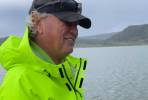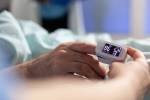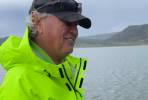Low-risk lung cancer screening saves lives
Although lung cancer kills more people than breast, colon, pancreatic and prostate cancers combined, the most effective early detection method for lung cancer has not been recognized by the government - until now. Heading into August, the U.S. Preventive Services Task Force (USPSTF) issued its long awaited draft recommendation that people considered at high risk for lung cancer get screened for the disease using a low dose CT scan.
"This is the most significant advancement in fighting lung cancer to date," says Dr. Bill Mayfield, a thoracic surgeon at Wellstar in Atlanta, Georgia. "With these scans that use the latest technology with the lowest radiation exposure to patients, we can detect an early lung cancer, as small as grain of sand, at a curable stage."
Historically, lung cancer’s five-year survival rate has been only 16 percent, primarily because the majority of lung cancers are diagnosed at a stage when it is too late for effective treatment.
"This recommendation is validating the science and studies over the last decade that have so clearly shown that lung cancer screening can and will save lives, tens of thousands of lives, now," says Laurie Fenton Ambrose, CEO and president of Lung Cancer Alliance.
The USPSTF recommendation targets those at known high risk defined by their current or former smoking history. When implemented responsibly, more knowledge about pre-cancerous conditions and other risks will be gained, and accelerate more research into better diagnostic and treatment tools for all types of lung cancer.
According to Mayfield, the risk associated with scans at such a low radiation dose is minimal, while the benefit from responsible screenings to high-risk populations is great.
"There is always some risk with any medical testing or procedure, but the risk has to be put into the context of safe and responsible screenings. This recommended screening is not a one and done. It involves an effort from groups of responsible medical professionals,” adds Mayfield.
According to International Early Lung and Cardiac Action Program, the radiation level from a low-dose CT scan is half of the radiation amount from a mammogram, which many women over 40 have annually. The mammogram, which has become an increasingly common cancer detecting tool, has been credited in significantly reducing the five-year breast cancer survival rate in America.
Lung Cancer Alliance efforts strongly advocated for the recommendation and worked with physicians around the country to define best practice guidelines to ensure lung cancer screenings are done responsibly to minimize risk and maximize benefits for patients.
"When your patient, your mother or your friend has their lung cancer caught early, when it can be completely curable, the value of this new tool in the fight against lung cancer is undeniable," says Mayfield.



















